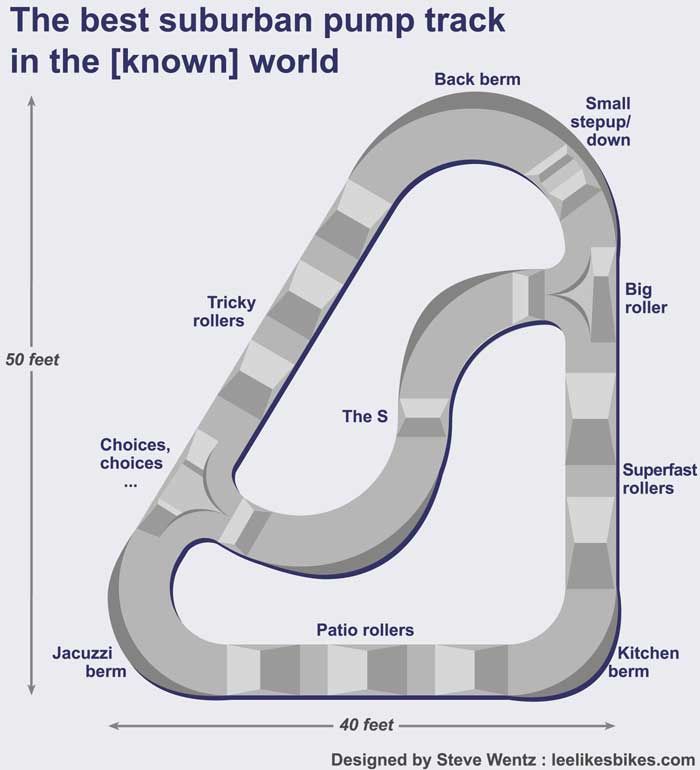A trails design should resist erosion and require little maintenance. Make a precise food plan and go for lighter meals such as couscous mashed potatoes rice mix etc.

Stony Brook Reservation Hiking And Biking Paths Map Design Illustration Map
Railroads began to spring up across the country.

. A trail management plan should provide specific and detailed design recommendations as well as information about installation of trail signs. For a 2 to 3 week hiking trip you should take breaks and resupply frequently along the trail. They should include trail configuration and length tread surface and width clearing width and height grade turning radius and more.
Review of Existing Guidelines and Practices Program Manager. This can always be exceeded in terms of width improved surface and gentler gradient as it typically is in the developed parks along the route. DESIGN ELEMENT URBAN TRAIL CROSS-SECTION RURAL TRAIL CROSS-SECTION Clearing Width 10 - 14 feet 7 - 9 feet Tread Width 6 - 10 feet 3 - 5 feet Tread Surface 4-inch crushed rock base that has been compactedNatural native soil.
AASHTO recommends a minimum of 10 feet for multi-use trails. Set bar at 45 degrees less or more to match the force of the water. TRAIL DESIGN STANDARDS 5-9 SIDEWALKS Sidewalks and walkways enhance the walkability of an area.
The plan sheets are typical trail drawings with tables you will edit to meet the design standards for your project Several sheets define the location and scope of your project. Design multi-use paved trails for an appropriate speed for cyclists. 3 What Are Plan Sheets And How To Use Them Continued Sheets that define the.
Trail alignment should include both vertical and horizontal alignment and is related to design speed and sight stopping distance. Helens Trail to Swift Way. A minimum design speed of.
The plan should ensure that signs do not overwhelm the trail in complexity or number especially along backcountry trails. Use well tamped soil or crushed small rocks to reinforce the log. Bar is buried completely at least 36 down trail from the bottom of the drain dip.
And in the West similar hotel trails were designed to guide stock and pack trains into remote country. 20 mi 45m. These guidelines are intended to allow flexibility in trail design appropriate to the location site-specific environmental conditions and expected users.
15 mi 43m. Search over 300000 trails with trail info maps detailed reviews and photos curated by millions of hikers campers and nature lovers like you. We also recommend taking calorie-rich foods such as nuts peanut butter chocolate etc.
However where heavy use is anticipated a 12 to 14-foot width is recommended. SAFETY 1st Choice - Separate trail from vehicles 2nd Choice - Minimize vehicle crossings of trail 3rd Choice - If trail co-exists with road then choose route with lower speed and volume Design for visibility and crime prevention in all settings 2. The remaining sheets provide details on specific trail construction features.
The trail planning and design checklist on the next page also provides a useful reference to ensure all steps are undertaken. FOUR MAIN GOALS FOR TRAIL DESIGN 1. This new 300-page spiral-bound publication several years in the making provides a first-ever comprehensive how-to guidebook for developing all types of recreational trails.
Trail designers often look to the American Association of State Highway and Transportation Officials AASHTO design guidelines as the standard for multi-use trail widths. DRAFT 1142010 Log should be green 10-12 in diameter and peeled. 09 mi 22m.
This trail system expanded as the area became a state park in 1864 and then later a national park in 1890. In Californias Yosemite Valley a network of tourist trails began in the 1850s. Designing Sidewalks and Trails for Access Part I of II.
These guidelines have been developed around the trail planning and design process outlined in Figure 1. The Minnesota Department of Natural Resources DNR is pleased to announce the completion of its much anticipated Trail Planning Design Development Guidelines. 63 mi 3h 15m.
Trail Planning A step by step process that can be applied to differing scale trail planning initiatives. Establish design standards These standards will guide the construction of your trail s so its worth spending some time on them before you starting flagging its location. The Trail Guidelines in this document will serve to update the existing standards and incorporate new methods and procedures for the Park s current and future trails related to planning design construction and management.
Sidewalk design should incorporate an appropriate walkway width safety lighting pleasant walking surface texture benches and a landscaped separation of pedestrian and vehicular traffic to create a pleasurable walking experience. This chapter presents the design guidelines for a range of trail types as well as trail crossings trailhead access points and a variety of trail amenities. The Guidelines will assist Park staff and Park.
FS personnel only will fall trees for bars. The top of the bar should be level with. The agencies that are parties to the Trail discussed and agreed on minimum design guidelines for the trail summarized in the table.

3 Trail Intersection Darlington Wayfinding Signs Wayfinding

8 Key Steps To Jumping Your Mountain Bike Dirt Bike Track Mtb Trails Bike Pump Track

Rei Breadcrumb Trail Showing The Hierarchy Of The Site Design Guidelines Design Snow Trip

I M Building A Pump Track Singletrack Forum Bike Pump Track Bicycle Track Dirt Bike Track

Anasazi Trail Trail Petroglyphs Ivins

Hiking Magazine Layout Hiking Magazine Hiking Backpacking Guide

Metro Will Install 400 New Route Signs On Regional Trail Network This Year Bikeportland Route Region Signage

Madison County Outdoors Hiking Brochures Small Business Branding Logo Small Business Branding Branding Design Logo
0 comments
Post a Comment